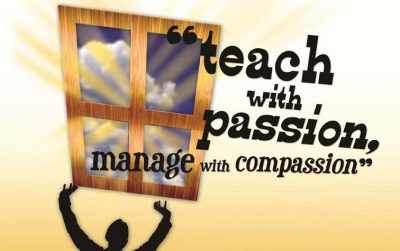We believe in thanking our sources! This post was sourced from the following blog/website:
http://dangerouslyirrelevant.org/2023/01/review-the-coach-eduro-learning.html The following is a new blog post related to education and teaching and relevant to our website visitors. The blog post is not based on the opinions or values of our company but is related to education and teaching, so we wanted to share it with YOU! If you ever have any questions please let us know. Now… on to the post!
[Disclaimer: Kim Cofino is a friend of mine and I highly respect her work!]
Over the past months I have had the incredible privilege of spending a lot of time with Kim Cofino and her instructional coaching team at Eduro Learning. Not in person – Kim is in Bangkok, Thailand, and her team is all over the globe – but online. Lately I have been leaning into the task of enhancing my instructional coaching knowledge and skillsets, so I signed up for Eduro Learning’s yearlong online course, The Coach.
The Coach has more than a dozen modules. Each module typically has multiple units, and each unit has several different tabs within it. All in all, there are many dozens of activities, videos, challenges, and reflections, and hundreds of accompanying resources. A unit usually starts with a Big Idea such as Coaches have the responsibility to ensure equity in their work – for all community stakeholders. That big idea typically is accompanied by one to five videos (sometimes with guests like Ken Shelton or Alysa Perreras!). Other tabs in the unit may include an Introduction with more info (e.g., expected learning outcomes, essential questions, enduring understandings, and essential vocabulary), Key Resources, and the always-important Action tab. Every unit also is aligned with to relevant standards from the Coaching Competency Practice Profile (CCPP) and the International Society for Technology in Education (ISTE) Standards for Coaches.
Kim and her team have identified and curated a fantastic set of resources. The Coach is designed to be a 12-month experience, so there’s plenty of time to dig deep into all that they have provided. I know that I will be returning often to the various readings, tools, and protocols as I continue to try and strengthen my own coaching skills. Because Kim and her team have tapped into multiple different coaching frameworks, I was exposed to ideas and resources from Jim Knight, Diane Sweeney, ISTE, and others throughout the course.
One of the core components of The Coach is a personal project. Participants identify a current instructional coaching goal and then work to implement it throughout the course. Along the way, they connect it to what they’re learning and have multiple opportunities to reflect, share, and get feedback. Kim and her team have done a wonderful job of scaffolding this work so that it doesn’t seem overwhelming.
One of the things that I appreciated the most about The Coach was its differentiation when it came to action steps and reflections. Kim and her team have been very thoughtful about creating prompts and action tasks that are different for aspiring, new, or experienced instructional coaches. Each of those groups has different needs, and participants in The Coach can easily choose which reflections and actions best fit their current role.
I signed up for the self-paced option, but there’s also a cohort option that includes regular, ongoing meetings and mentorship. Kim and her team are fantastic instructional coaches and I would encourage folks to choose that option if you can make it work with your schedule.
The Coach is a lot (in a good way). It’s a bit pricey but also extremely comprehensive and well worth the expense. I never once questioned the money I spent because I was getting a lot of value out of the learning experience. I didn’t pursue the certification option because I’m not in a current coaching role and don’t really need it, but the opportunities to reflect along the way and get feedback from Kim and her team are invaluable and worth the time spent in the cohort and on the accompanying participant workbook.
I learned a great deal from The Coach. The course was both wide-ranging and deep, and gave me many things to work on and think about. Thanks, Kim and team!
Time To Teach reviews each blog post by our contributors but if you feel this is a blog post better suited for another page please let us know.
Teachers and Educators are our heroes. We want to thank you for the work you do!
Yours In Education!
Time To Teach


